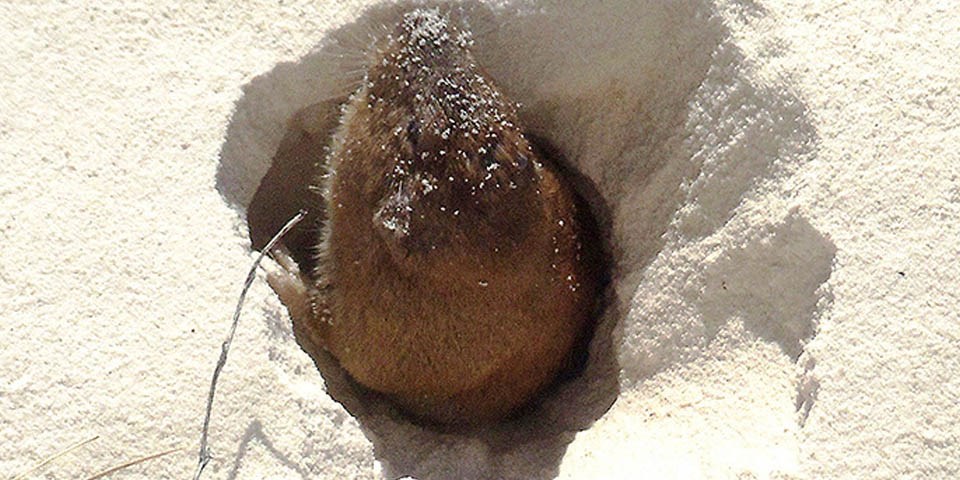
NPS Photo Just because you don’t see something doesn’t mean it’s not there. At White Sands National Park, this is certainly true for animals. You may not see our animal residents during your visit, but they’re around. In fact, some, like the pocket gopher, are right under your feet! These fossorial (burrowing) rodents spend almost all of their lives underground, constantly excavating and creating mazes of burrows just below the surface. Members of the family Geomyidae, pocket gophers are named for the fur-lined pockets they have on the outside of their cheeks. These pockets are used to store food and can even be turned inside out! Pocket gophers share these pockets with several other related rodents, like the pocket mouse and kangaroo rat (both also found at White Sands). There are almost three dozen species of pocket gophers living throughout parts of North and Central America. They live in a variety of habitats but tend to prefer places with plenty of vegetation and loose, sandy, moist soil for digging – places like White Sands National Park, for example. Several species of gophers are found within White Sands and the surrounding Tularosa Basin, including desert pocket gophers (Geomys arenarius), Botta’s pocket gophers (Thomomys bottae), plains pocket gophers (Geomys burarius), and occasionally yellow-faced pocket gophers (Cratogeomys castanops). Within White Sands, these bustling burrowers are mostly found digging their way through the more vegetated areas of the park, like the edges of the dunefield or interdunal areas (the flat spaces between dunes). Considering all this digging, it’s no surprise our pocket gophers are built to burrow. They have a small, stout body with a short neck and small ears and eyes. They dig with their front legs, so these legs are strong and tipped with long claws to break apart soil. When these claws aren’t enough, pocket gophers can also use their enormous front teeth. Their lips actually close behind these teeth, so they can dig without getting dirt in their mouths! Because pocket gophers spend nearly all of their lives belowground where there’s no light, they must rely on their sense of touch. Their whiskers help them sense what’s in front of them, and their sparsely haired tail can be used to sense what’s behind them. All these adaptations make pocket gophers deft diggers. Once pocket gophers start digging, these burrowing bulldozers can create networks of burrows that go as deep as five to six feet (1.5-2 meters). These burrows consist of shallow tunnels and deeper “rooms,” including bathrooms, pantries for food storage, and a nursery for offspring. Pocket gophers spend most of their lives in these burrows. They can even collect food from underground by pulling plants down by their roots! These herbivores typically feed on roots, tubers, and other kinds of vegetation. One of the few times a pocket gopher actually emerges from its burrow is to dispose of soil. All the dirt it digs up has to go somewhere! So, the gopher will push it out of its burrow, creating mounds you can see on the surface. Disposing of this soil only takes a moment, but surfacing at all is dangerous for pocket gophers. There are many predators that hunt them. At White Sands, these include snakes, badgers, coyotes, kit foxes, and owls. Badgers and snakes will hunt pocket gophers underground, but most predators wait for them to come to the surface. Because of this, some gophers evolve a color camouflage for protection. Their coats match the color of the local soil so they’re harder to see. Interestingly enough, this hasn’t happened at White Sands. We have white mice, white lizards, and white insects, but our pocket gophers stubbornly remain shades of brown or reddish brown. Needless to say, the reason why our gophers dare to be different has prompted debate and theories from biologists. Whatever the reason for it, this lack of camouflage hasn’t kept pocket gophers from making a home here at White Sands National Park. |
Last updated: August 27, 2020
